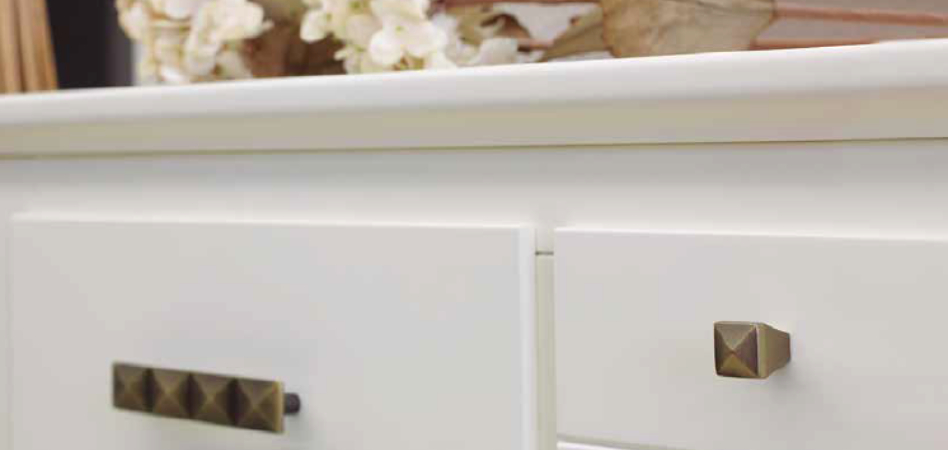What is the optimal rotation of decorative fittings?

A question that is as interesting as it is suggestive, or, perhaps, as concrete as it is unspecific. What is the optimal rotation of decorative fittings?
Well, it depends on who’s asking and what they’re after. This is such a versatile issue that it can even define the person who’s asking both personally and professionally.
We could almost – almost – call it a game.
Shall we play?
If the person asking the question needs very precise answers to make them fit, like a rebellious puzzle piece, into their previous reasoning (rationalising, for example, the renewal times of products in stock and linear products with Swiss precision), the answer must be up to scratch and almost – almost – mathematical: 2 years.
This response would be useful, to some extent, for small retailers and small hardware stores. In other words, for businesses with limited physical sales and storage capacity due to the space available, a situation that conditions the seller’s managing process and determines the rotation of decorative fittings.
And we say to some extent because even if a small or medium-sized business does not have enough space to rotate decorative fittings as, for example, a large DIY store would, it can develop in-store material acquisition strategies that are adapted to its options, so that its customers can still access the latest new products.
No one’s left out.
Let’s look at the second possibility: we put ourselves face to face with a department manager who doesn’t try to solve puzzles with the right piece for the new season. Instead, this manager tries to expand them with pieces that offer new landscapes, that attract the most avant-garde customers and those who are looking for decorative fittings to renovate their home decoration (by the way, that’s a growing trend). In short, customers who find what they’re looking for, or find what they’d imagined, who acquire it, share it and make the company grow.
In that case, we need to focus on and talk about the kind of sales manager who doesn’t conform to the trends showcased by the different seasons; the kind of professional who knows how to take risks without endangering their brand or going beyond the limits of their clients’ capacity to be surprised. A professional who, moreover, can afford to do all this because of the space and capacity they have and because they work with the best manufacturers, with the skills and resources required to live up to their ambitious commercial objectives in terms of quality, creativity and daringness.
This professional knows the magic number, the exact figure for the rotation of decorative fittings: two years. But, we say again, this professional does not conform.
The close union that experience and professionalism have given this professional and their team has generated an invisible bond with their clients that’s based on empathy. They know that customers don’t form a homogeneous group and that treating them all in the same way will cause a large number of them to go to another establishment in search of different, unique experiences.
We live in the age of technology. It’s important not to lose sight of that detail in any of our activities. Sales managers have a whole world of trends, offers, qualities, prices, ranges, etc. at their fingertips. Some are more daring, others more conservative, but that universe is there. It’s within reach with a glance at a computer screen, just a click away.
And they’re not the only ones. The customer, in another tier, from another chair and maybe hundreds or thousands of miles away, can also access a universe of similar offers, and has, as well, the same technological resources to acquire the product that best sways them.
We need to differentiate ourselves, to distinguish ourselves. To this end, the strategic management of the rotation of decorative fittings is key.
Do the two years hold? Do they get shorter? How are the deadlines set?
To answer these questions, the word that you should probably always keep close by as a guide, in the purest Pepito Grillo style, is: balance.
We’re going to answer those questions in order:
– Yes, the two years hold.
– Yes, the renewal periods are shortened.
– With a short, medium and long-term strategy, managed through balancing results.
Despite us answering the questions in an orderly manner, doubt – which is considered the absolute mistress of the foggy realms of uncertainty – seems to remain somewhat unperturbed. Wouldn’t you agree?
Well, that might seem to be the case, but it’s not really: doubt is losing, the fog is dissipating and, with it, much of the uncertainty dissolves. Keeping to the two years is to act with caution. Let’s do it, then, but let’s not stay stuck with it; others are going to go further, and it’s good to be at the forefront. How? By shortening the renewal periods with new product presentations annually, for example.
REI already does this and offers more than 300 new items per year to accommodate in-store trends and the pleasures of finding and buying them that its customers enjoy. We’re talking about those new products that customers who “only buy the best because they have to try it and can’t pass it up” wait for without knowing that they’re waiting for them. Or those others who have time and go to the store to take a walk in the Temperate Zone and end up in the Cold Zone, unable to resist those new products, who are looking for them deliberately.
So, does the optimal rotation of decorative fittings have to be done every two years, with an added extra renewal annually?
There is no one-size-fits-all answer. The uniqueness of each sales team must determine tailored strategies for decorative fitting rotation. An individual response is the best answer and maintaining balance is the best advice.

